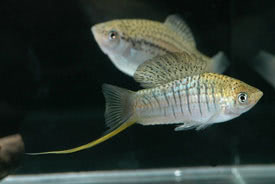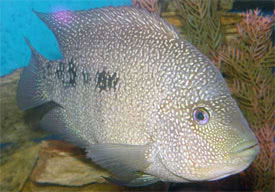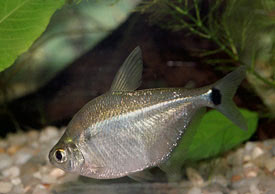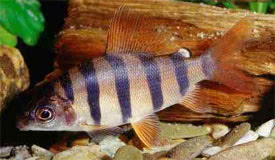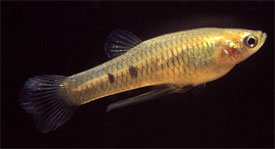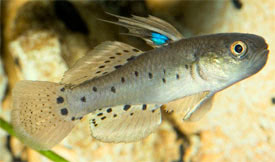
 Magyarul / Hungarian
Magyarul / Hungarian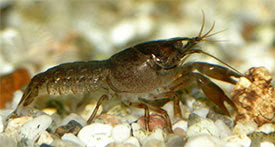
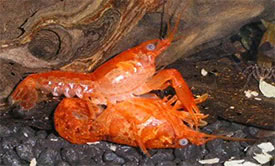
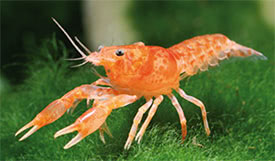
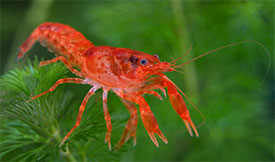

- Scientific name: Cambarellus patzcuarensis
- Synonyms: Cambarellus montezumae patzcuarensis, Cambarellus patzcuarensis Fitzpartick, Cambarellus patzcuarensis var. Orange, CPO
- Common name: Orange Dwarf Crayfish
- Group: Freshwater invertebrates
- Habitat: Central America, Mexico
- Size: 4 cm
- Biotope: Endemic to lake Pátzcuaro, which is a vulcanic lake, located in Michoacan at around 2,000 meters above sea level.
- Social behavior: Quite peaceful, and only a little territorial crayfish, but they don’t seriously harm one another. If the tank has a lot of hiding places it will be rare for any specimens to lose a pincer. It is best kept in a species-only tank.
- Diet: Omnivorous; unfussy eater, it will readily accept any live and dried food (tubifex, snails, bloodworms, fish, dried leaves and vegetables).
- Breeding: Quite easy
- Tank: Minimum 40 litres
- Population: 8-10 crayfish for 60 litres
- Decoration: Provide many hiding places such as clay pipe, rocks and hollow roots. Use sand as substarte. Decorate the tank with Java moss.
- Temperature: 15-25 °C
- pH: 6.5-8
- Hardness: 12-18 NK°
- Lifespan: 1-2 years
Description: Most specimens found in the wild are brown, sometimes with a gray or blue tint. The orange color morph of Cambarellus patzcuarensis originated in the Netherlands, but this form is rarely found in the wild. Each crayfish can show different varieties of tones of orange, and even they can have molted or striped pattern. Additionally, there is a chocolate-brown color morph of the striped dwarf crayfish. Cambarellus patzcuarensis is listed as an endangered species on the IUCN Red List. Unlike most crayfish, the Orange Dwarf Crayfish doesn't destroy plants. The temperature of the water will affect their growth rate, with warmer water causing them to grow faster. Young crays molt every three to four weeks, and older specimens molt up to two times per year. They usually begin breeding at four months old, when they normally reach about 1,5-2 cm in length.
Adult males can be recognized by the first pair of pleopods, which are rigid with terminal hooks at the forward end. In females the first pleopods are flexible and similar to the other four pairs of pleopods. The male will pin the female onto her back and deposit sperm packets near her stoma. Depending on the water temperature, after 4 to 30 days, the eggs appear under the female’s abdomen. The female attach the eggs to her pleopods. The number of the eggs can vary between 20 and 40, with a maximum of 60, and their color can be dark green, yellow, whitish, gray, or nearly black. The female moves her pleopods constantly to supply the eggs with fresh, oxygen-rich water and to prevent dirt from accumulating on the eggs. While other crayfish species hide during this period and often stop eating, the orange striped dwarf crayfish females are walk around the tank even during the daytime. The eggs hatch after 3 to 5 weeks, and the baby crayfish drop off and scatter about a week later in the aquarium. The female won’t eat her kids. If starved or overcrowded they will attack each other and tear off legs, but these will grow back. The babies can grow up in the tank with the adults, or you can separate the mother before the eggs hatch and raise the babies in their own tank.




